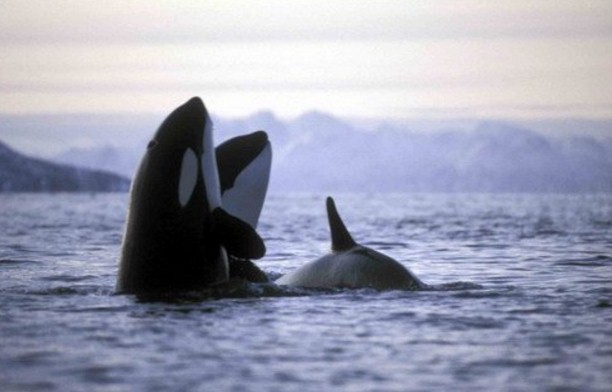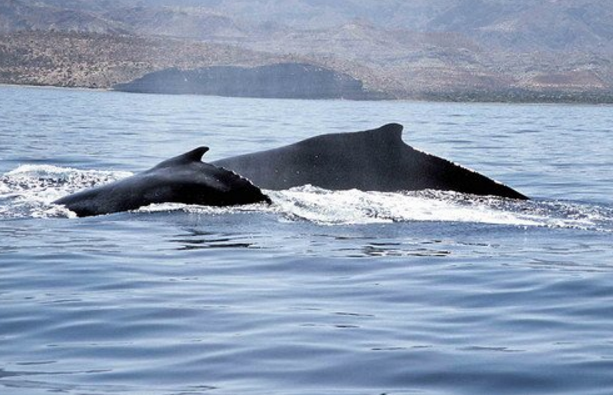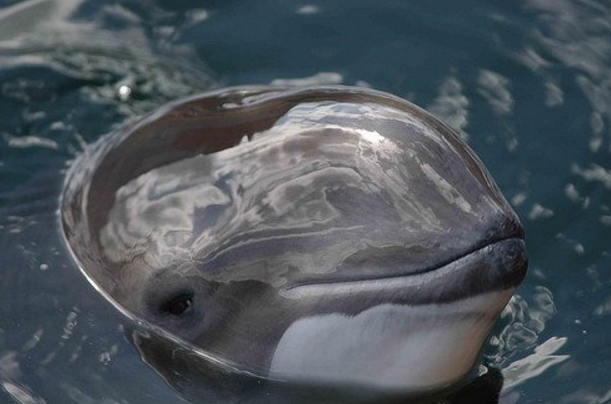Killer whales are undoubtedly one of the greatest predators in the worlds oceans. They are found across the world, and are known to prey on a variety of species, including large fish, seals, rays, and even other marine mammals. So, with such a wide ranging distribution, efficient hunting strategies, and diverse dietary preferences, how can it be possible to escape their eventual clutches?
 A group of Orca
Photo credit: Sea Watch Foundation/F UGARTE48
A group of Orca
Photo credit: Sea Watch Foundation/F UGARTE48
Well a group of researchers from Denmark and Australia think they might have discovered one species’ methods of killer whale avoidance (Videsen et al., 2017). Although humpback whales, particularly males, are known to produce loud acoustic emissions, especially during mating, Videsen et als’ (2017) research indicated that mother-calf acoustic interactions might be emitted at a lower frequency than usual (approximately 40 decibels lower than male songs), in a process akin to “whispering”. As killer whales are known to use the acoustic signals of other marine mammals as an indicator of prey availability, this ability to communicate at a lower frequency might help mask the presence of a vulnerable calf in murky breeding waters, where killer whales might have the advantage (Videsen et al., 2017).
 A humpback Whale mother and calf pair
Photo credit: Sea Watch Foundation/ C SWANN12
A humpback Whale mother and calf pair
Photo credit: Sea Watch Foundation/ C SWANN12
Humpback whales aren’t the only cetacean species thought to have adapted their acoustic signal properties to limit killer whale interactions. Acoustic studies have revealed that four groups of smaller odontocete species, including the pygmy sperm whale (Mellinger et al., 2007), six Lissodelphindae species (Jung et al., 2007), the Francisciana river dolphin (Madesen et al., 2005), and all species of porpoise (Khyn et al., 2013), have independently evolved the ability to emit echolocation click trains at much higher frequencies (>100 kHz), than the majority of other cetacean species (approximately 40-70 kHz). As the upper limit of killer whale hearing is reported to be around 100 kHz (Moriasaka and Connor, 2007), this adaption to produce higher frequency click trains could facilitate acoustic crypsis for many of the killer whales’ typical prey species (Moriasaka and Connor, 2007).
A harbour porpoise Photo credit: Sea Watch Foundation/M BAINES20
So there you go, two examples of how cetaceans alter their acoustic behaviour to avoid killer whale predation. One by communicating at a lower frequency, and one by using echolocation at a higher frequency…..however, with killer whales as intelligent as they are, how long do you think it will be until they learn to hear at these higher and lower frequencies?
More information on this topic, with particular reference to humpback whales, can be found here . If you’ve spotted a killer whale, a humpback whale, or any other cetacean species, please report your sighting to our online submissions form here. All sightings are valuable!
By Laura Bartlett, Research Assistant at Sea Watch Foundation 2017.
References
Jung, K., Kalko, E.K. and Von Helversen, O., 2007. Echolocation calls in Central American emballonurid bats: signal design and call frequency alternation. Journal of Zoology, 272(2), pp.125-137.
Kyhn, L.A., Tougaard, J., Beedholm, K., Jensen, F.H., Ashe, E., Williams, R. and Madsen, P.T., 2013. Clicking in a Killer Whale habitat: Narrow-band, high-frequency biosonar clicks of harbour porpoise (Phocoena phocoena) and Dall’s porpoise (Phocoenoides dalli). PloS one, 8(5), pp. 63763.
Madsen, P.T., Carder, D.A., Bedholm, K. and Ridgway, S.H., 2005. Porpoise clicks from a sperm whale nose—Convergent evolution of 130 kHz pulses in toothed whale sonars?. Bioacoustics, 15(2), pp.195-206.
Mellinger, D.K., Nieukirk, S.L., Matsumoto, H., Heimlich, S.L., Dziak, R.P., Haxel, J., Fowler, M., Meinig, C. and Miller, H.V., 2007. Seasonal occurrence of North Atlantic right whale (Eubalaena glacialis) vocalizations at two sites on the Scotian Shelf. Marine Mammal Science, 23(4), pp.856-867.
Morisaka, T. and Connor, R.C., 2007. Predation by killer whales (Orcinus orca) and the evolution of whistle loss and narrow‐band high frequency clicks in odontocetes. Journal of evolutionary biology, 20(4), pp.1439-1458.
Videsen, S.K., Bejder, L., Johnson, M. and Madsen, P.T., 2017. High suckling rates and acoustic crypsis of humpback whale neonates maximise potential for mother–calf energy transfer. Functional Ecology.

























